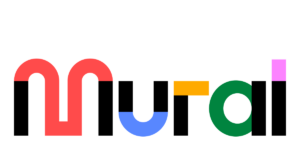
Mural is a web tool that enhances virtual collaboration. Faculty and students can use Mural in a variety of ways, including sharing notes on digital whiteboards, creating mindmaps to brainstorm, designing presentations, and much more.
Website: Mural
Mural allows for effective collaboration and active learning within a class or group through sharing ideas and reflection, planning projects, and tracking tasks. Ideas for engaging students with Mural:
- Brainstorm on a topic, statement, project, or idea. Use Mural for students to brainstorm and sum up activities of a specific subject and determine student knowledge before starting a new topic.
- Mindmaps, Diagramming, and Design Thinking activities. Mural allows you and your students to create various mindmaps and diagrams that can help visually solve problems and organize ideas.
- Collaborate and Organize. For in-person classes, you may have had students write ideas or facts for an activity on a sticky note and add it to a whiteboard and then moved the notes into columns. You can do the same with Mural, but your “sticky notes” can contain icons, gifs, images, article links, and anything else that might be useful.
- Questions Board: Students can access a “questions” board 24/7 and anonymously post questions.
- Group projects. Mural eliminates the need to schedule time in advance for the group members to meet face-to-face. Students can work freely on their group assignments at their own convenience while still updating group members as soon as changes are made without scheduling conflicts and the constraints produced from limiting project work to specified times.
- Presentations. Faculty and students can create visual and interactive presentations and storylines using Mural.
The main function of Mural is to collaborate using the variety of whiteboard and bulletin board tools that they provide. It’s also interactive, with the ability for faculty and students to add content at any time.
- Sticky Notes – add ideas or action items, then change the color and cluster themes. These can include text, icons, gifs, images, etc.
- Mapping and Diagramming – build quick and easy visualizations of flows, maps, processes, hierarchies, journeys, etc.
- Templates – Mural provides templates for many different types of projects, or you can create your own template and re-use it each term.
- Communication – add to the mural at any time, and use it to comment or chat with other collaborators
- Available on macOS and Windows computers, as well as iOS (iPhone, iPad), and Android devices
- Integrates with Microsoft 365 applications such as Word, Excel, and Outlook
3.5 Star –
Accessibility Review: 3.5 Stars
Partially supports Text to Speech (TTS) such as NVDA, Jaws, or Voiceover
Partially supports Speech to Text (STT) such as Dragon NaturallySpeaking or Voice Dictation
Partially supports Alternative Input Experience/Keyboard Navigation
Partially supports Screen Magnification and Color Contrast
Has an accessibility statement, contact support personnel, and a product team that can enhance accessibility
This technology is not included with the University of Denver. Faculty, staff, and students may need to purchase a subscription. The technology may offer educational pricing with an “edu” email address. Free trials or free accounts may also be available through the technology website.
The University of Denver does not directly provide technical support. The Office of Teaching and Learning may consult on pedagogy.
Cai, & Gu, X. (2019). Supporting collaborative learning using a diagram‐based visible thinking tool based on cognitive load theory. British Journal of Educational Technology., 50(5), 2329–2345. https://doi.org/10.1111/bjet.12818
Liu, Lee, T.-P., & Huang, Y.-M. (2023). Exploring Students’ Continuance Intention Toward Digital Visual Collaborative Learning Technology in Design Thinking. International Journal of Human-Computer Interaction, 1–14. https://doi.org/10.1080/10447318.2023.2172904

OTL Technology Rating
YELLOW technologies are not widely supported. DU may or may not have a 3rd party vendor security agreement for the use of these tools. However, some uses of this tool may be appropriate for teaching if certain conditions are met.
